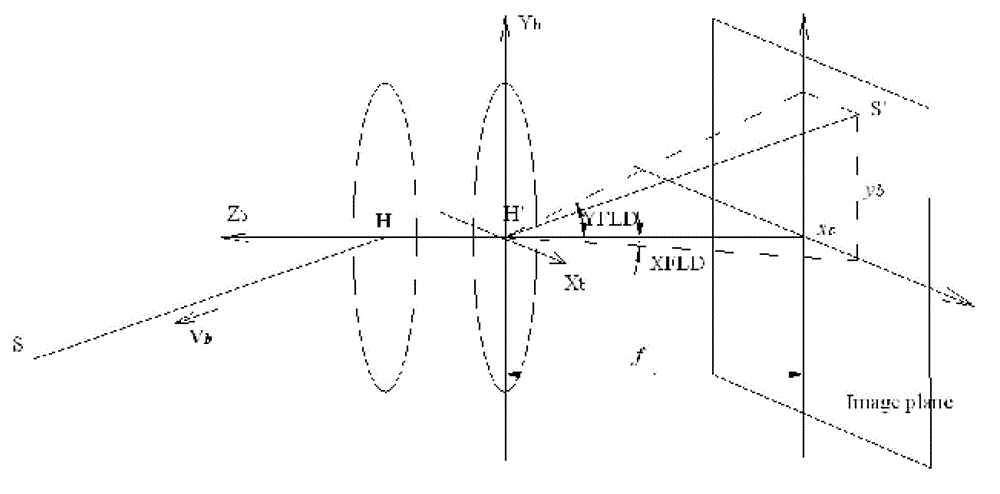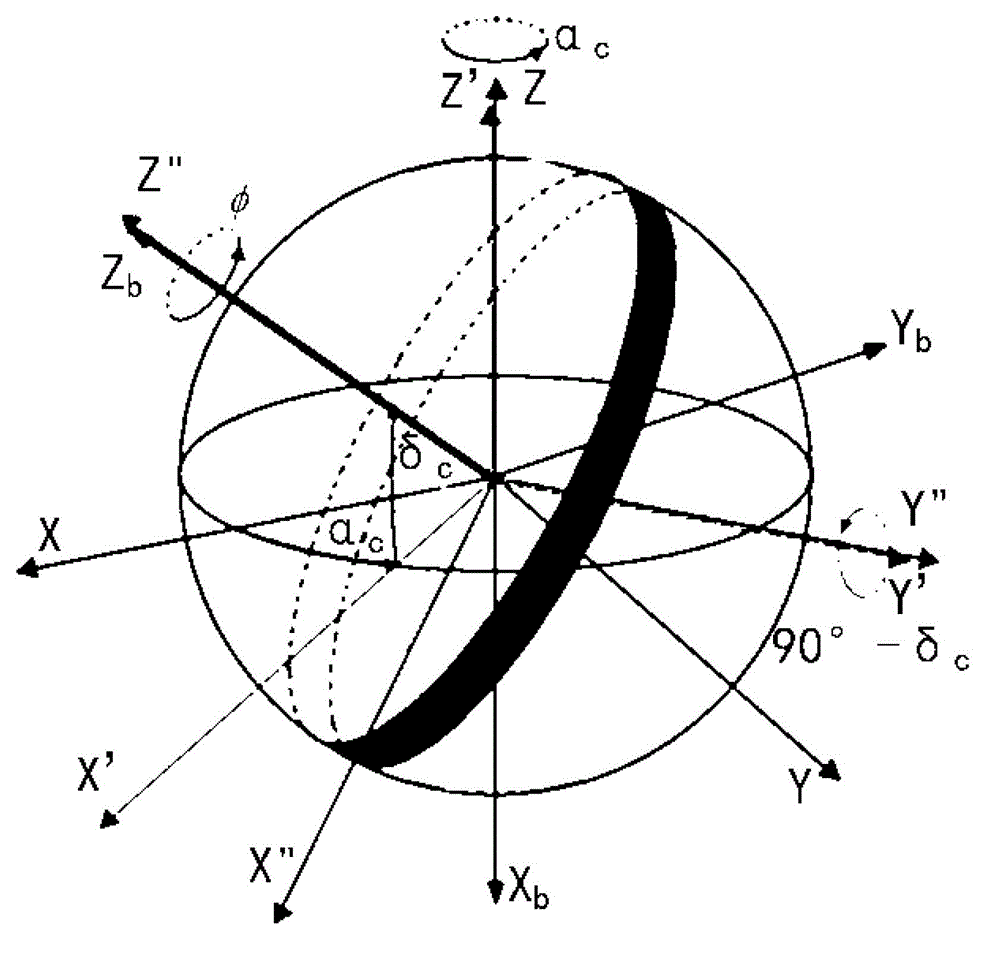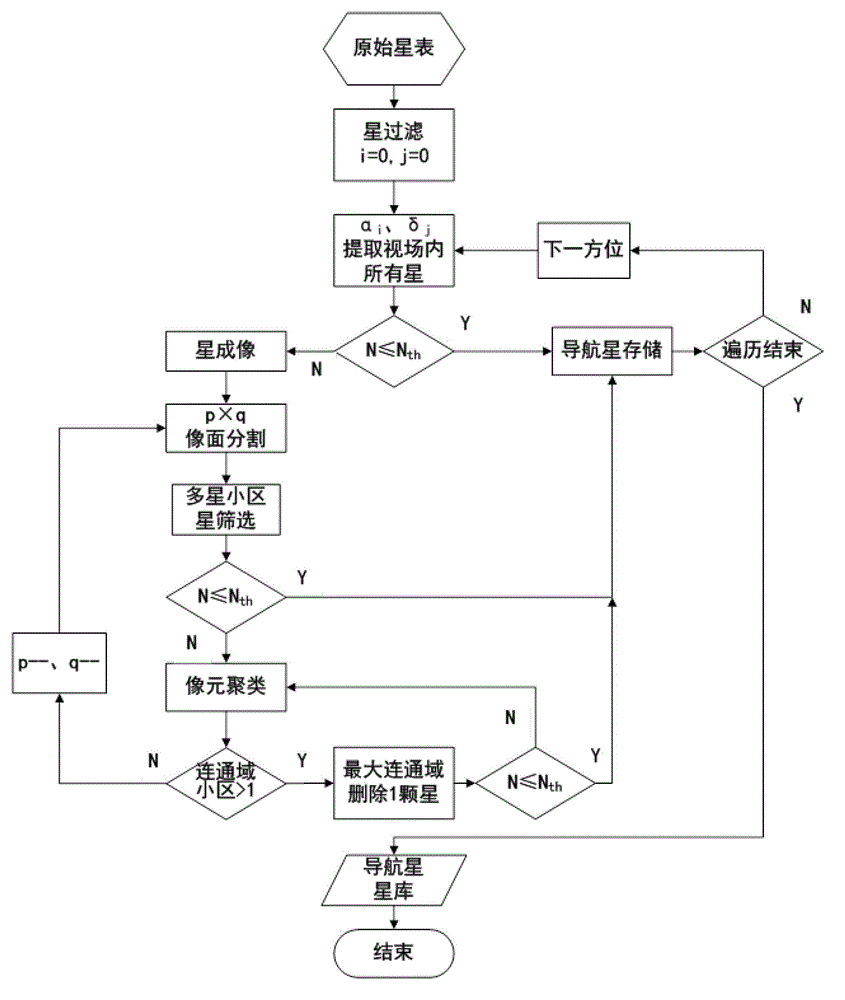Navigational star screening method for star sensors
A technology of star sensor and navigation star, applied in the field of screening navigation stars, can solve the problems of less consideration of the position of the stars, the evenness of the distribution of the navigation stars needs to be improved, the distribution of the navigation stars is not uniform enough, etc., and the effect of uniform distribution can be achieved.
- Summary
- Abstract
- Description
- Claims
- Application Information
AI Technical Summary
Problems solved by technology
Method used
Image
Examples
Embodiment 1
[0047] There are two characteristics of the star-image high-density area, one is that there are many star images in the same area, and the other is that the distance between the star images is short. According to these two characteristics, the present invention designs a method for screening navigation stars for star sensors.
[0048] First, according to the first feature, the image plane is divided into multiple rectangular areas of equal area along the row and column directions of the focal plane of the image plane detector to form an orthogonal grid. To simplify the description, each rectangular area is called a cell (that is, each grid in the orthogonal grid is a cell), and the equally divided interval in the row and column directions is called a scale. Select a certain scale to segment the image plane (also known as the image plane), and in actual operation, set the number of rows p and the number of columns q to realize the division of the image plane; if the high-densit...
Embodiment 2
[0067] Realize on the basis of embodiment 1 the method for the screening navigation star of star sensor, its specific implementation process is as follows:
[0068] The first step is to filter the original star catalog. Delete dark stars according to the limit star magnitude, and delete variable stars and double stars at the same time. For the convenience of subsequent processing, the remaining star data are arranged in ascending order according to declination, and the star number threshold N is determined according to the star map recognition algorithm. th , that is, select the corresponding star map recognition algorithm according to actual needs to determine the star number threshold N th , you can also set it yourself according to your needs.
[0069] In the second step, the optical axis of the star sensor points to the coordinate on the whole celestial sphere (α i ,δ i ) position, α i or delta i Change 1° every time, traverse the whole celestial sphere. Extract each...
Embodiment 3
[0097] On the basis of Example 1 and Example 2, the content of the present invention is further illustrated through the implementation of two segmentation scales (ie, different values of q and p) and comparison with the prior art.
[0098] The following embodiments use the SAO star catalog as the original star catalog; SAO star catalog (The Smithsonian Astrophysical Observatory Star Catalog / Smithsonian Astrophysical Observatory Star Catalog) is an astrometric star catalog published by the Smithsonian Astrophysical Observatory in 1966 , containing a total of 258,997 stars. This catalog is compiled from some previous catalogs, but only includes stars above magnitude 9.0 and whose proper motions have been accurately measured. The star names in the SAO star catalog start with the letter SAO followed by a numerical serial number. The stars are divided into divisions by declination, and every 10 degrees is a division, which is divided into 18 divisions. The stars in each division ...
PUM
 Login to View More
Login to View More Abstract
Description
Claims
Application Information
 Login to View More
Login to View More - R&D
- Intellectual Property
- Life Sciences
- Materials
- Tech Scout
- Unparalleled Data Quality
- Higher Quality Content
- 60% Fewer Hallucinations
Browse by: Latest US Patents, China's latest patents, Technical Efficacy Thesaurus, Application Domain, Technology Topic, Popular Technical Reports.
© 2025 PatSnap. All rights reserved.Legal|Privacy policy|Modern Slavery Act Transparency Statement|Sitemap|About US| Contact US: help@patsnap.com



